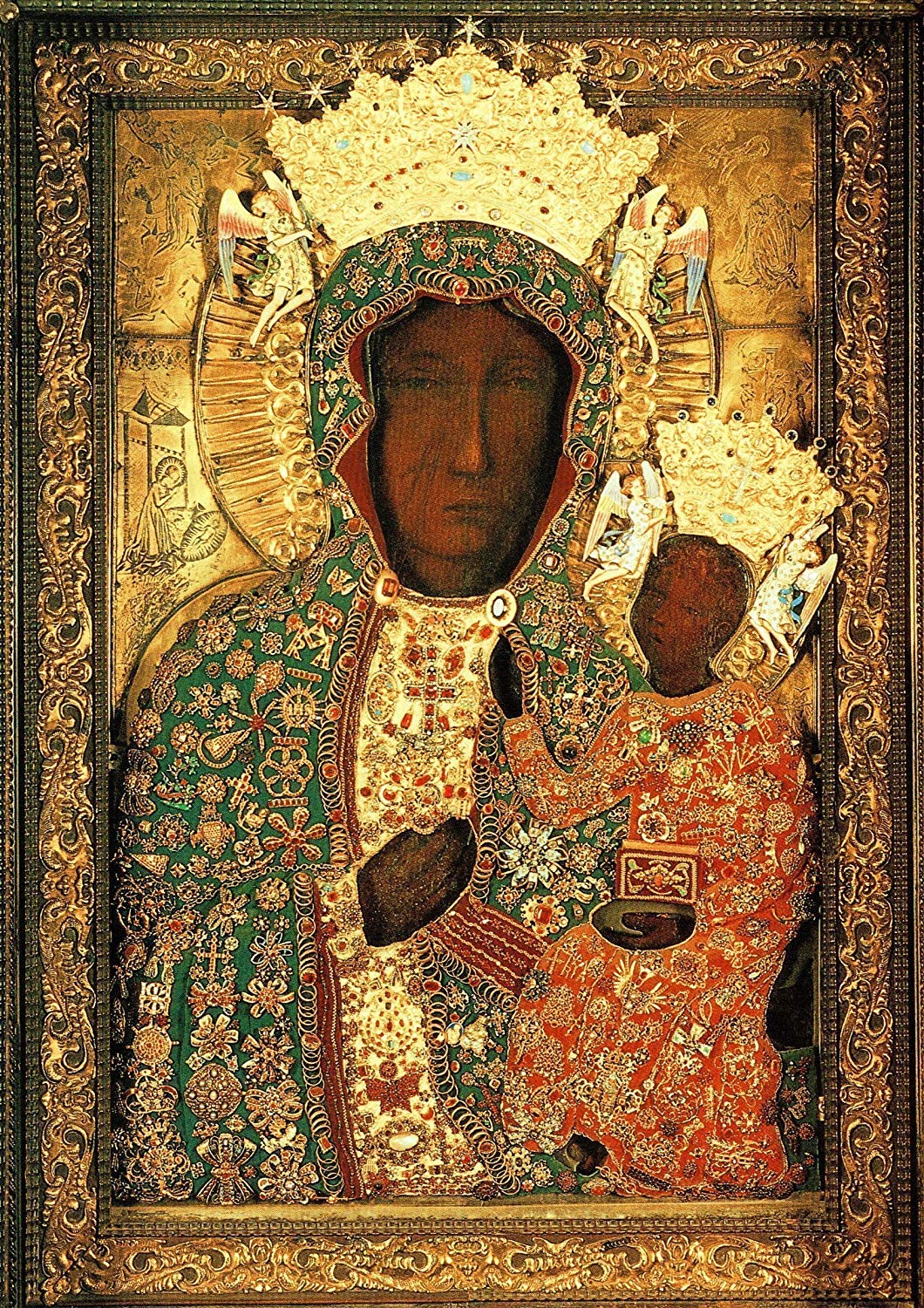Czestochowa is a city in south Poland on the Warta River with 248,894 inhabitants (2004). It has been situated in the Silesian Voivodeship (administrative division) since 1999, and was previously the capital of Czestochowa Voivodeship (1975-1998). However, Czestochowa historically is part of Lesser Poland, not of Silesia and before 1795 (see: Partitions of Poland), it had belonged to the Kraków Voivodeship.
The town is known for the famous Paulist monastery of Jasna Góra that is the home of the Black Madonna painting, a shrine to the Virgin Mary. Black Madonna a painting of Mary in which  she is depicted with dark or black skin. This name applies in particular to European statues or pictures of a Madonna which are of special interest because her dark face and hands is thought by some to be the true color. In this specialised sense "Black Madonna" does not apply to images of the Virgin Mary portrayed as explicitly black African, which are popular in Africa and areas with large black populations, such as the United States. However, it has been argued that European Black Madonnas have their roots in African traditions. The Black Madonna of Czestochowa is a holy icon of the Virgin Mary, that is both Poland's holiest relic and one of the country's national symbols.
she is depicted with dark or black skin. This name applies in particular to European statues or pictures of a Madonna which are of special interest because her dark face and hands is thought by some to be the true color. In this specialised sense "Black Madonna" does not apply to images of the Virgin Mary portrayed as explicitly black African, which are popular in Africa and areas with large black populations, such as the United States. However, it has been argued that European Black Madonnas have their roots in African traditions. The Black Madonna of Czestochowa is a holy icon of the Virgin Mary, that is both Poland's holiest relic and one of the country's national symbols.
The origins of the icon and the date of its composition are still hotly contested among scholars. The difficulty in dating the icon stems from the fact that the original image was painted over after being badly damaged by Hussite raiders in 1430. Medieval restorers unfamiliar with the encaustic method found that the paints they applied to the damaged areas "simply sloughed off the image" according to the medieval chronicler Risinius, and their solution was to erase the original image and to repaint it on the original panel, which was believed to be holy because of its legendary origin as a table top from the home of the Holy Family. The painting displays a traditional composition well-known in the icons of Eastern Orthodoxy. The Virgin Mary is shown as the "Hodegetria" ("One Who Shows the Way"). In it the Virgin directs attention away from herself, gesturing with her right hand toward Jesus as the source of salvation. In turn, the child extends his right hand toward the viewer in blessing while holding a book of gospels in his left hand. The icon shows the Madonna in fleur de lys robes.
Although the icon of Our Lady of Czestochowa has been intimately tied with Poland for the past six hundred years, its history prior to its arrival is shrouded in numerous legends which trace the icon's origin back to St. Luke who, it is believed, painted it on a cypress table top from the house of the Holy Family.
One of the oldest documents from Jasna Góra states that the picture travelled from Jerusalem, via Constantinople and Belz, to finally reach Czestochowa in August 1382 by Wladyslaw Opolczyk, Duke of Opole.
The Black Madonna is credited with miraculously saving the monastery of Jasna Góra (English: Bright Mount) from a 17th century Swedish invasion, The Deluge, which actually changed the course of the war. This event led King Jan Kazimierz to "crown" Our Lady of Czestochowa ("the Black Madonna") as Queen and Protector of Poland in the cathedral of Lwów on April 1, 1656.
Another legend concerning the Black Madonna of Czestochowa is that the presence of the holy painting saved its church from being destroyed in a fire, but not before the flames darkened the fleshtone pigments.
The legend concerning the two scars on the Black Madonna's right cheek is that the Hussites stormed the Pauline monastery in 1430, plundering the sanctuary. Among the items stolen was the icon. After putting it in their wagon, the Hussites tried to get away but their horses refused to move. They threw the portrait down to the ground and one of the plunderers drew his sword upon the image and inflicted two deep strikes. When the robber tried to inflict a third strike, he fell to the ground and squirmed in agony until his death. Despite past attempts to repair these scars, they had always reappeared.
Another legend states that, as the robber struck the painting twice, the face of the Virgin Mary started to bleed; in a panic, the scared Hussites retreated and left the painting.
Because of the Black Madonna, Czestochowa is regarded as the most popular shrine in Poland, with many Polish Catholics making a pilgrimage there every year. Often, people will line up on the side of the road to hand provisions to the pilgrims as those who walk the distance to Czestochowa walk the entire day and have little means to get things for themselves.
There is also a Lusatian culture excavation site and museum in the city and ruins of a medieval castle in Olsztyn, approximately 15 kilometres (ca. 10 mi) from the city center.

